New Year or Oshōgatsu (お正月) is the most important holiday of the year for the Japanese. It’s a family holiday that is steeped in long tradition and is a far cry from the parties and public displays of drunkenness that often define the countdown to the New Year for many around the world. Here is what you need to know about Japanese New Year customs and traditions.
Table of Contents
When is New Year celebrated in Japan?
Previously the Japanese celebrated New Year based on the lunar calendar but since the adoption of the Gregorian calendar in 1873, the Japanese joined much of the Western world in celebrating the New Year as January 1st. Click here to learn how to read a Japanese calendar – still used for many official purposes in Japan.
Japanese New Year is a family holiday and for those working the grind in big cities, perhaps this is one of the few occasions that they make the journey back to their hometowns for the year.
Other families, or those from big cities themselves, may decide to take advantage of the string of days off and go on vacation for a few days. The holiday period varies from company to company but typically starts up to a few days before New Year and lasts until January 3rd.
If you’re traveling during this time, be sure to check opening times for attractions, restaurants and shops you want to visit as they may be closed or have limited hours during this period.
Japanese New Year traditions
Bonenkai – “Forget the year” parties
Bōnenkai, or “forget-the-year” parties, are held throughout December and are a means of forgetting the hardships of the past year.
Bōnenkai generally involve copious amounts of alcohol resulting in all manner of raucous behavior, a rare opportunity for many to let their hair down, especially for company employees working long, hard hours for most of the year.
They are often held at izakaya, Japanese drinking establishments that also sell small shared dishes.
If you’re working in Japan, expect to see a different side to your usually shy co-workers. However, don’t expect a re-count of the night’s shenanigans the next day at the office, other than to say what a great night was had by all. It’s essentially a case of what happens at the bōnenkai, stays at the bōnenkai – basically the one free pass a year to act a little crazy and be forgiven.
Osouji – ritualistic New Year cleaning
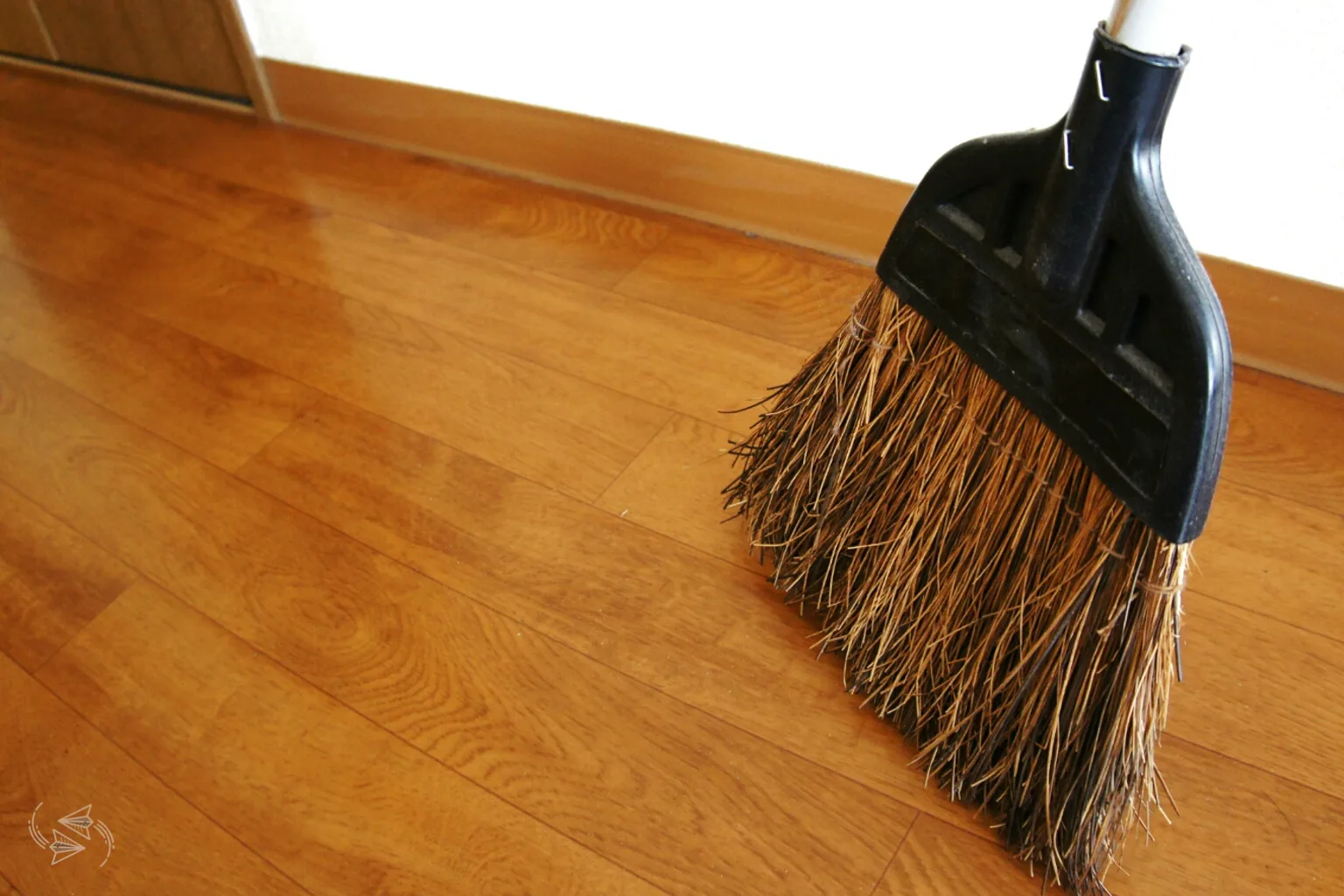
In English, we reference “spring cleaning” for the traditional big clean-outs and weekends of de-cluttering that usually take place as we come out of the cooler months.
Similarly, the Japanese use the term “osouji” (大掃除) to describe the ritualistic cleaning of homes and offices before the New Year. Like “spring cleaning”, however, osouji may be used to describe major clean-outs at any time of the year. Although, the Japanese take New Year osouji to mean a complete top to bottom cleaning affair, rather than selective tasks such as cleaning out cupboards or wardrobes.
Osouji is more than getting the house prepared for family New Year celebrations. It symbolizes a fresh, new beginning. Ridding homes and working spaces of clutter, particularly the clearing of soot and dust known as susuharai (煤払い), is said to give thanks for the blessings of the previous year and to purify these spaces for the coming one. It is therefore a ritual of great cultural and religious importance, and the Japanese will often dedicate several days to this annual custom, taking extra time and care to address those neglected areas around the home or office. Office workers will often spend the last couple of working days of the year on this task.
Given that osouji takes place in the winter, the cleaning of windows, balconies and outdoor spaces can be an unpleasantly cold task. Yet, the liberating feeling of “out with the old, in with the new” and putting your best foot forward into the New Year is motivation enough for most to grab their scarves and gloves and head outside.
Omisoka – New Year’s Eve in Japan
New Year’s Eve in Japan, Ōmisoka (大晦日), is usually spent at home with family. With the house fresh and anew from New Year’s cleaning, families gather together (often under the kotatsu – an amazing low table with a heated blanket draped over it under which you can tuck the lower half of your body) and watch Kōhaku Uta Gassen (Red and White Song Contest), a special NHK program aired annually on New Year’s Eve whereby popular male and female music artists compete against each other. The males represent the ‘white’ team and the women ‘red’, the traditional colors of New Year in Japan.
Around midnight, it is customary to welcome in the New Year by the eating of “year-crossing noodles” (toshikoshi soba). As soba noodles are long and fine, people eat them to wish for a long life.
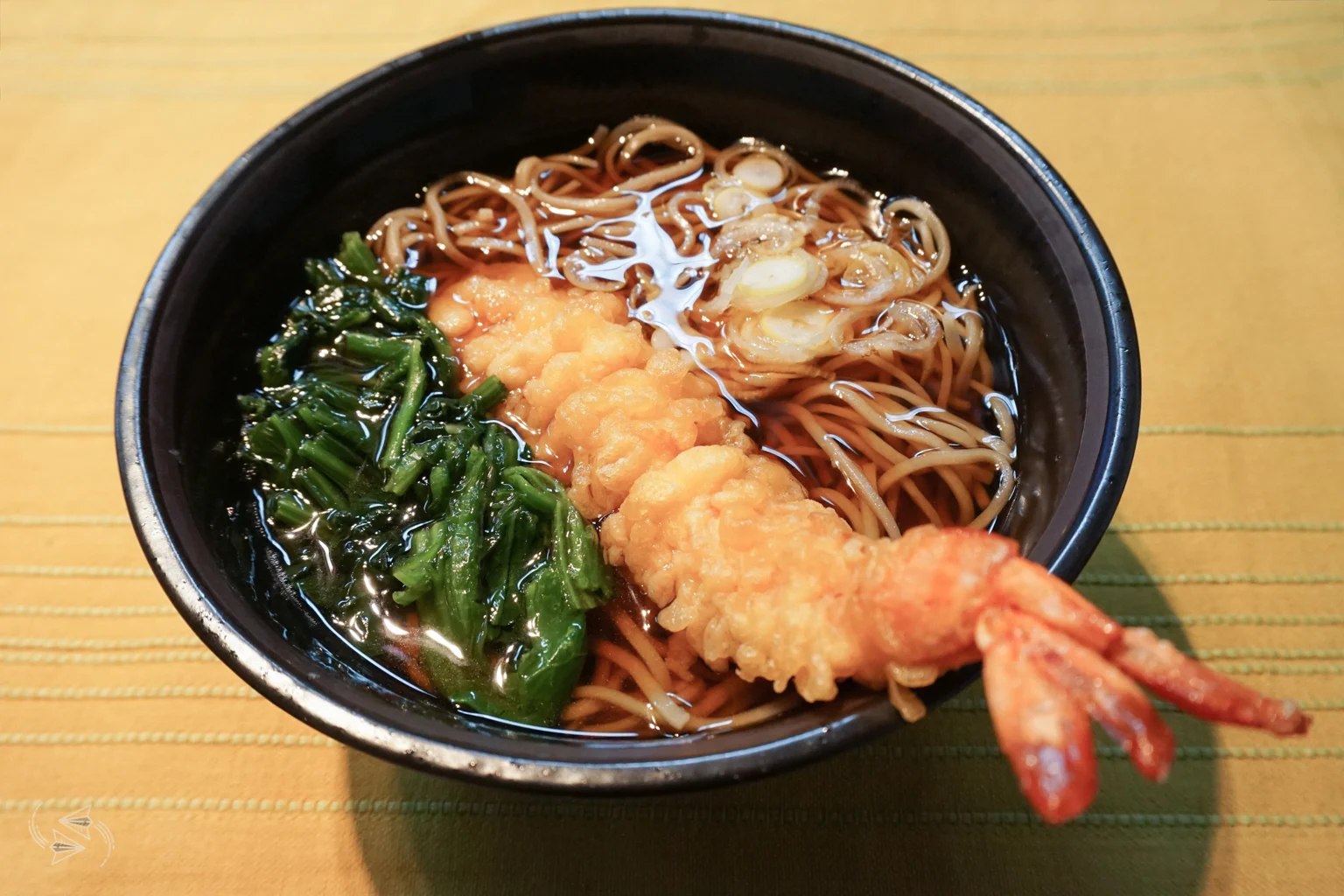
Watch our short video on kotatsu and how to use one.
Japanese New Year Food
During the first three days of the New Year, the Japanese typically eat osechi-ryōri. Examples of osechi dishes include marinated herring roe (kazunoku), boiled seaweed (konbu), fish cakes (kamaboko), mashed sweet potato with chestnut (kurikinton), simmered burdock root (kinpira gobō), and sweetened black soybeans (kuromame). There is much pride taken in the presentation of these dishes – their colors and arrangement – and each part represents different aspects of good fortune.
These dishes are made especially for the New Year and as they are basically sweet, sour or dried, can be kept without refrigeration for the duration of the festivities. A tradition dating back to the Heian Period (794-1185), osechi accounted for the closure of stores over the New Year period prior to the advent of mod-cons. As the dishes can be pre-prepared (or nowadays often bought) and eaten over several days, it also gives the cooks of the family a well-deserved break for the holidays.
One of the most important and auspicious dishes of New Year celebrations is ozōni, a soup containing rice cakes, that is eaten on New Year’s Day. It is said that it should be your first meal of the New Year to ensure good fortune in the coming year. Do be careful eating it, however, as there are a handful of deaths every year due to the glutinous rice cakes getting caught in people’s throats.
Japanese New Year Decorations
There are various types of New Year decorations in Japan.
Kadomatsu (門松) or “pine gates” are displayed in pairs at the front of house gates and buildings from January 1st-7th. They usually consist of three bamboo poles cut diagonally to different lengths with pine tree branches tied to them with straw rope. They may also include sprigs of other foliage and flowers. The bamboo represents growth and strength, while pine is a symbol of longevity. Houses and small businesses often display sprigs of pine as smaller and simpler versions of the kadomatsu.
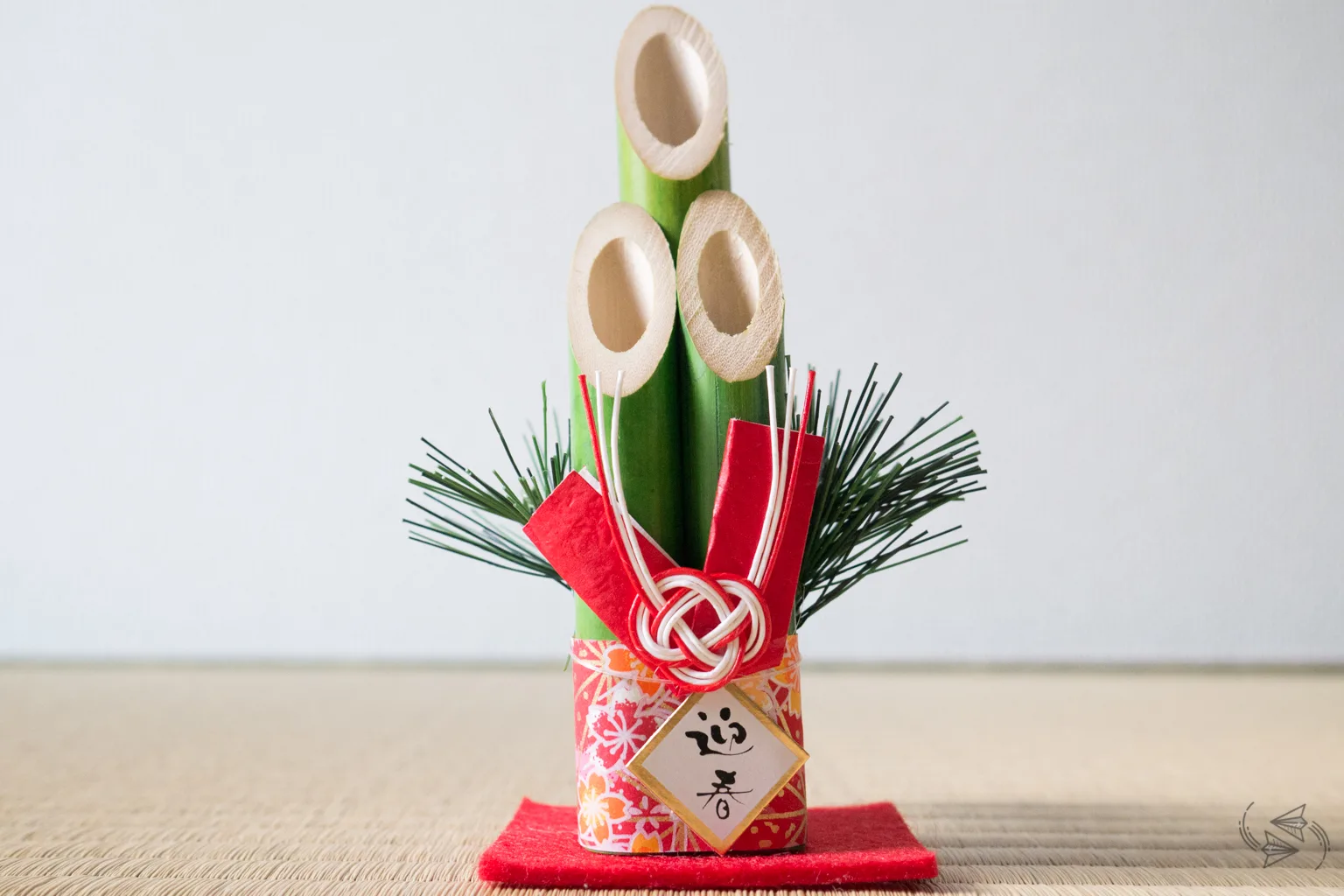
Shimenawa (注連縄) are sacred straw ropes used to indicate a purified space and to protect from evil spirits. You might see large ones at temples and shrines.

Here you can see the shimenawa with strips of white paper attached, known as “gohei”, that are used for Shinto blessings.
Shimekazari (注連飾り) are a special shimenawa decorated with various auspicious objects. They are hung at the entrances to homes and businesses during the New Year season to ward off evil spirits. The auspicious objects of course all have special meaning. For example, a daidai (橙), or Japanese bitter orange, is considered a good omen because if it is written using different characters, 代々, it can be translated as “generation to generation”. A lobster, meanwhile, represents a long life as its lean mimics that of an elderly person.
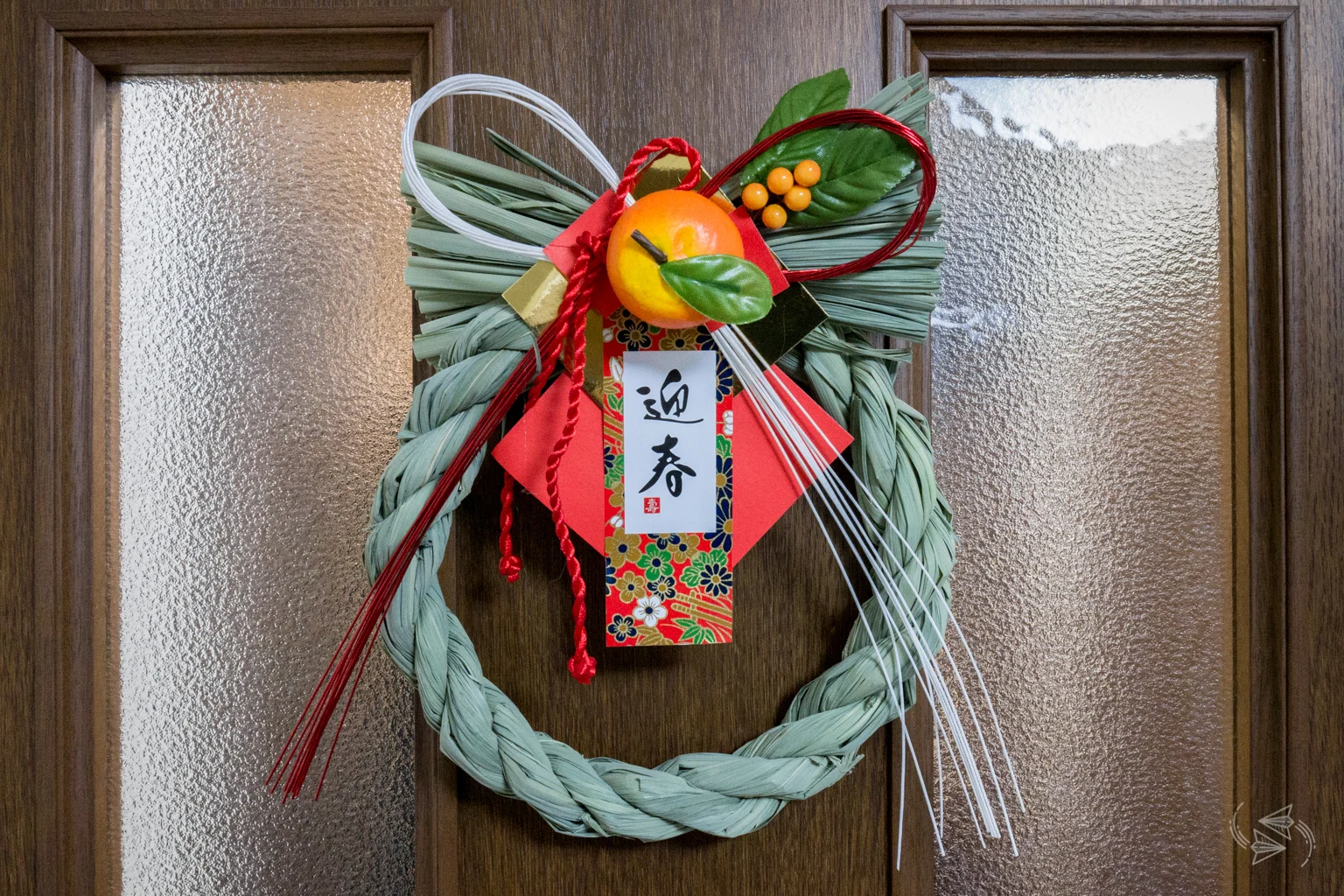
Kagami mochi (鏡餅) are made of two rice cakes (mochi), the smaller one placed on the larger one, and topped with the “generation to generation” bitter orange. The mochi represent the past year and the year to come, so combined with the orange symbolizes the continuity of the family over the years. It is placed in the kamidana or the miniature elevated Shinto shrine in homes and businesses. The decoration is said to gave gotten its name from the stacked mochi‘s resemblance to the copper round mirrors used during the Muromachi period, also known as kagami.
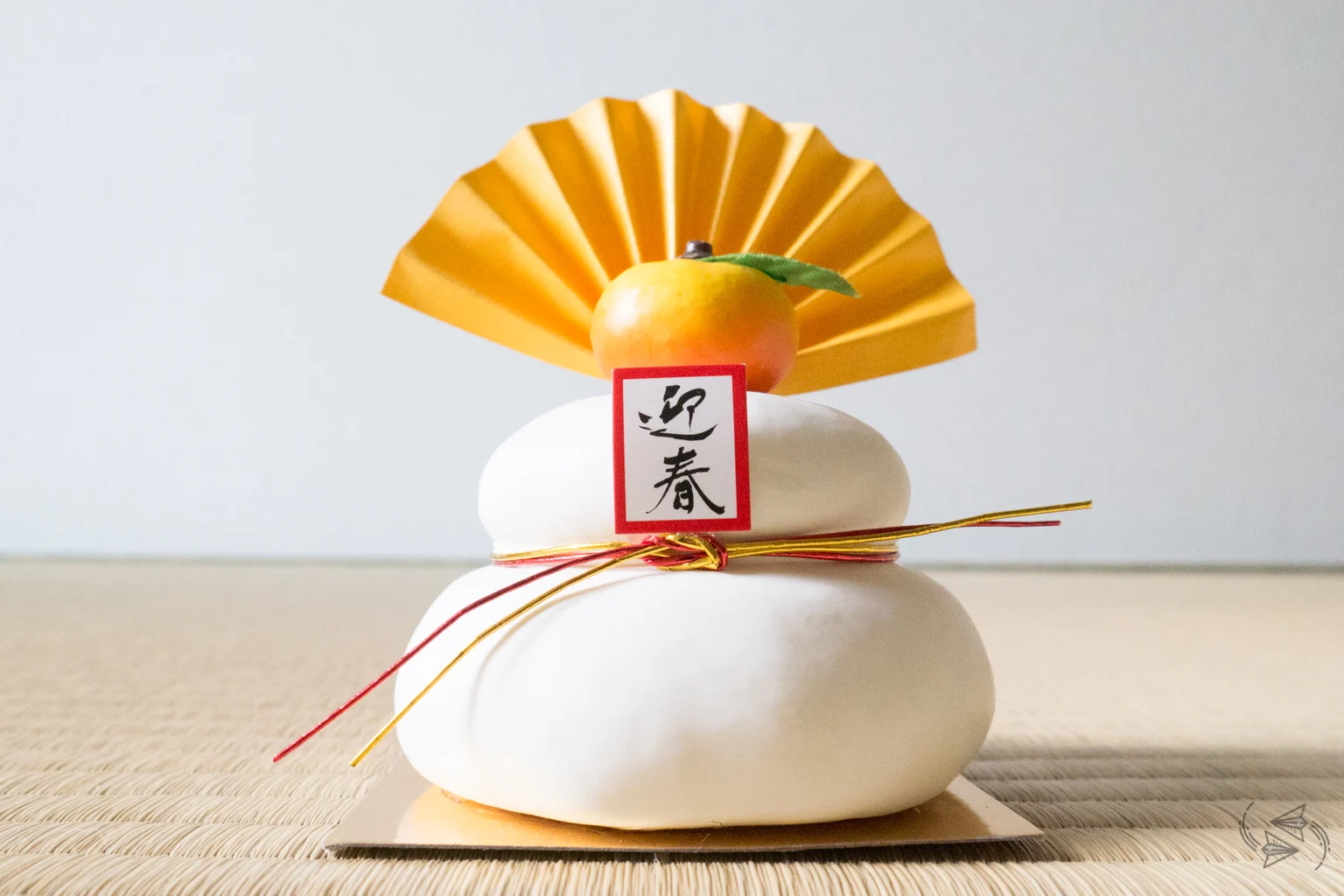
On January 11th (or on the second Saturday or Sunday in January), a ritual known as kagami-biraki (“the opening of the mirror”) takes place and the kagami mochi are split by hand or hammer, and then cooked and eaten with sweet red beans. A knife is never used as that would represent the severing of family ties.
As for the other decorations, after the New Year period is over, they are typically taken to shrines and burned.
New Year’s Day in Japan – how to say Happy New Year in Japanese
You say ‘Akemashite omedetou gozaimasu‘ (明けましておめでとうございます) to wish someone a Happy New Year in Japanese. You should note though that this is only said from January 1st. If you want to wish someone a Happy New Year in December, you should say ‘Yoi otoshio‘ (良いお年を). It is typically said as you say goodbye on your last meeting of the year.
First Sunrise and Other Firsts
Hatsuhinode (初日の出) is the first sunrise of the year. Before sunrise on January 1st, people often drive to the coast or climb up a mountain to enjoy the view.
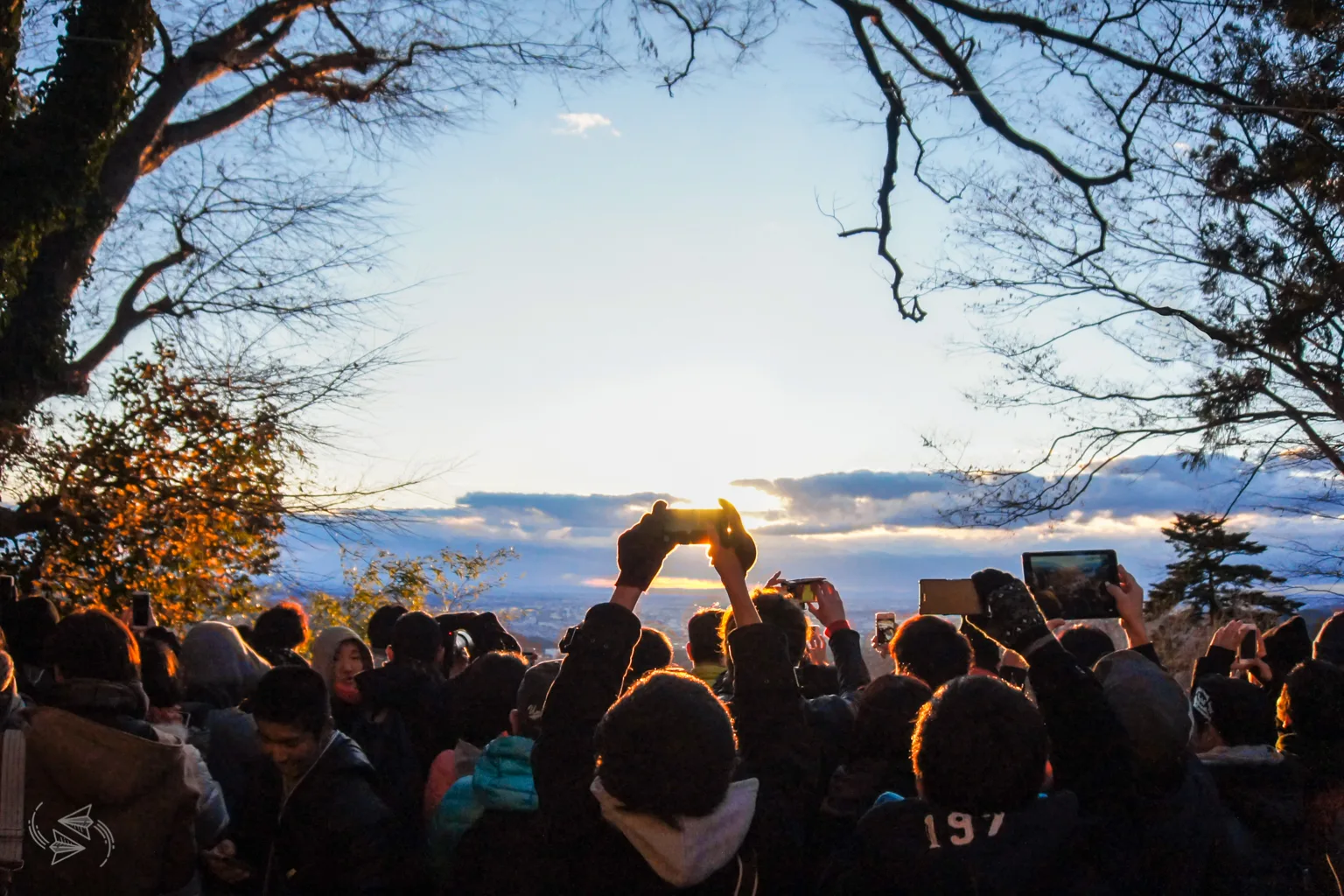
Another important first is Hatsumōde or the first shrine visit of the year (described in more detail below). However, basically any first of the year is considered important in starting the year off on the right foot.
Hatsumode – First Shrine Visit, Lucky Charms and Fortunes
The first shrine visit for the year, Hatsumōde, is a particularly important New Year custom. Some brave the cold and visit temples at midnight where bells are rung a total of 108 times in a ritual known as Joya no Kane ( 除夜の鐘 ) to represent and ward off the 108 worldly sins in Buddhist belief. If you go early enough, you can be one of those 108 who get to ring the bell. Going to small or less popular temples will increase your chances.
Most visit a shrine or temple during the day of January 1st or the first few days of the New Year, national holidays for the Japanese. Some don kimono for the occasion and there is a festive atmosphere about with many food and drink vendors set up to relieve the hunger and monotony for those in line to pray – a wait that can often be hours at many of the country’s most popular temples and shrines. Harajuku’s Meiji Jingu Shrine in Tokyo attracts a steady stream of visitors all year round, but be prepared for crowds of 2-3 million (yes, million) over the New Year. Because of that, some choose to wait until further into the New Year to make their first shrine visit.
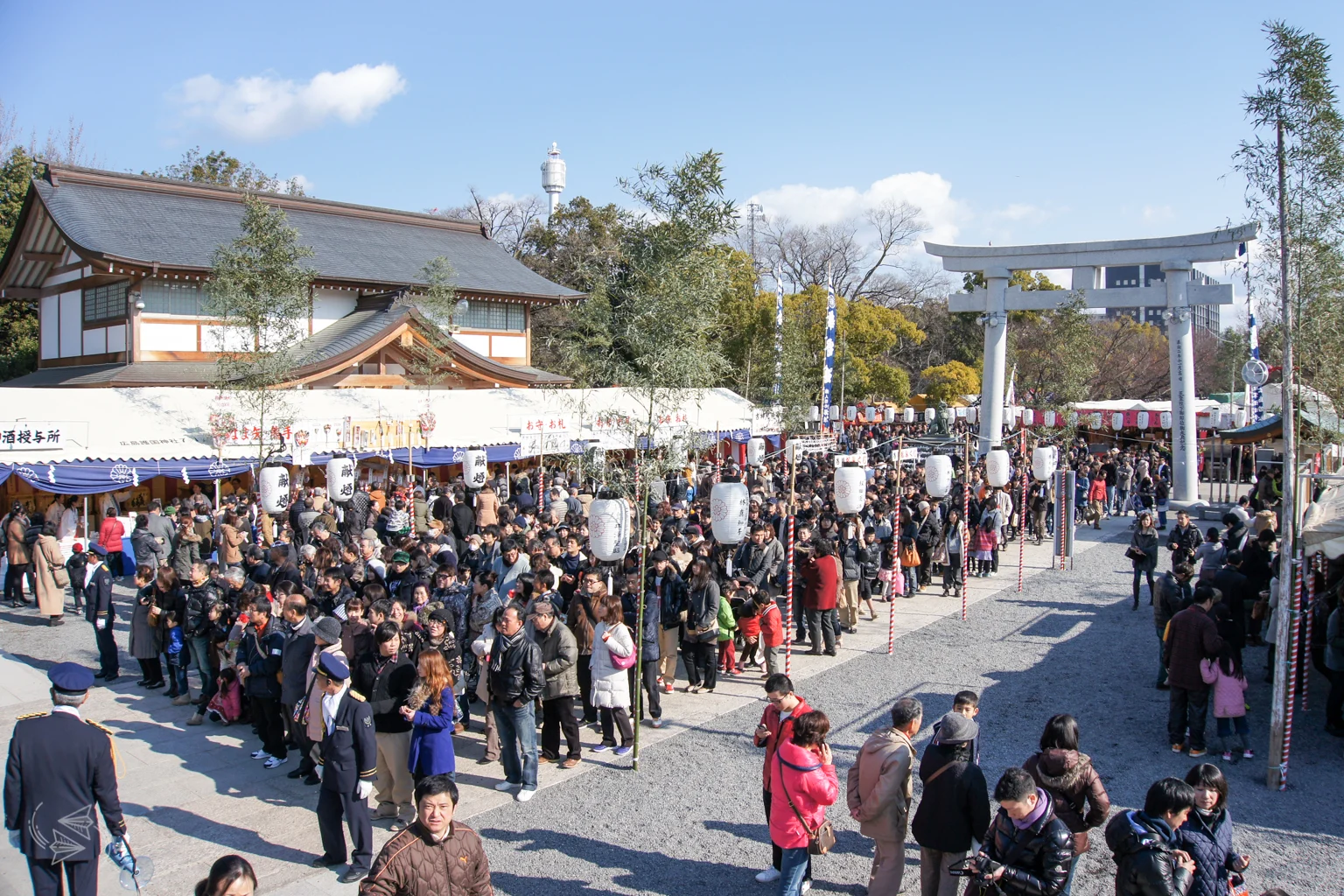
During this visit, the Japanese return their “lucky charms” from the previous year. You will most likely notice people carrying wooden arrows to the shrine with bells and other good luck charms attached. These are called hamaya which literally translates to an “arrow that destroys demons”. The Japanese keep them in their houses to ward off evil spirits. They are then returned to the shrine at the start of the year, along with any other charms and amulets they may have purchased during the previous one. You’ll see dedicated places set up at shrines for collection of these items which will later be burned en masse. Some shrines may have fires burning into which you can throw your own charms. New arrows and tokens of good luck are purchased at the shrine each year.
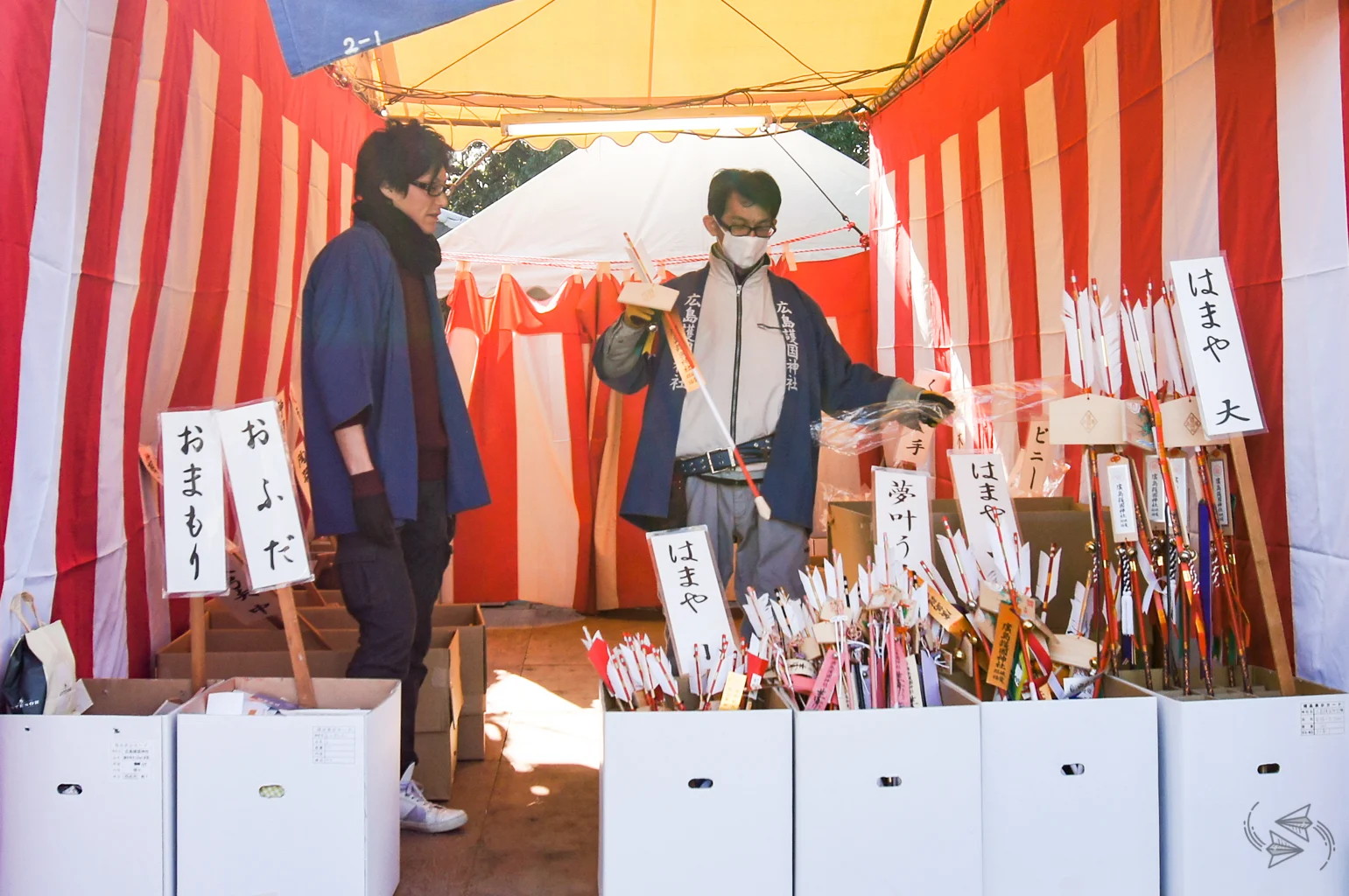
Other popular activities are writing your wishes on wooden plaques and getting your fortune or omikuji (おみくじ) on little strips of white paper. It will tell you your outlook on such things as business, relationships and whether or not you will find your “lost item”. I remember my first ever fortune in Japan – it said that my “lost item” would never be found, that I should really decide if I want to get married or not, and that I definitely shouldn’t travel at this time. This was two months into a round the world trip and, as it turned out, just a few months before Hai proposed. :)
If the fortune is good, you should take it home to keep the good luck with you. If the news is not so promising, you should fold it and tie it to the dedicated strings to ward off bad fortune and in the hope that you will get a better one next time.
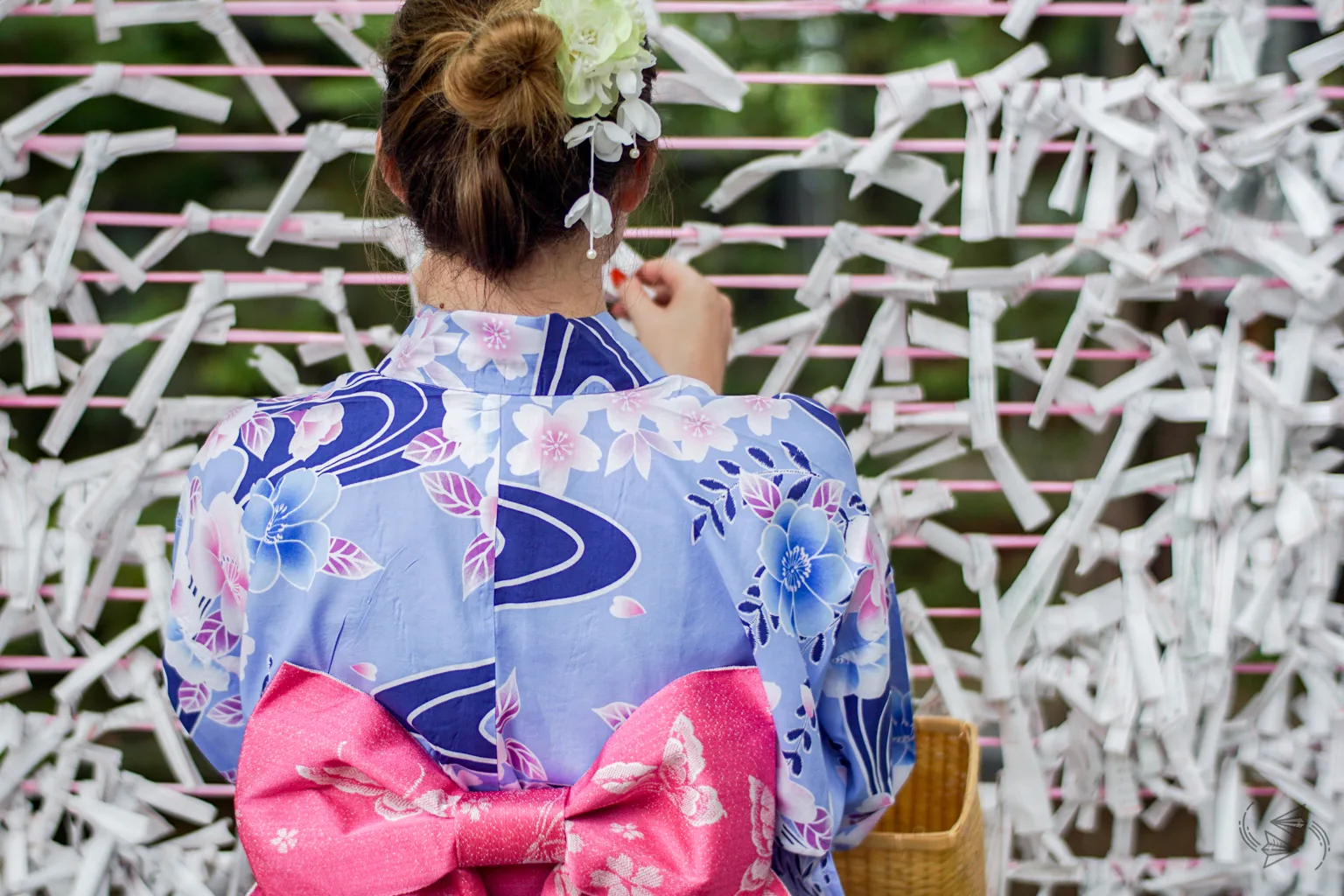
New Year goal setting – Daruma dolls
Daruma are round and hollow Japanese dolls, modeled after Bodhidharma, the founder of the Zen sect of Buddhism. They are a symbol of perseverance and good luck associated with goal setting, making them popular during the New Year when many people set their resolutions for the coming year.
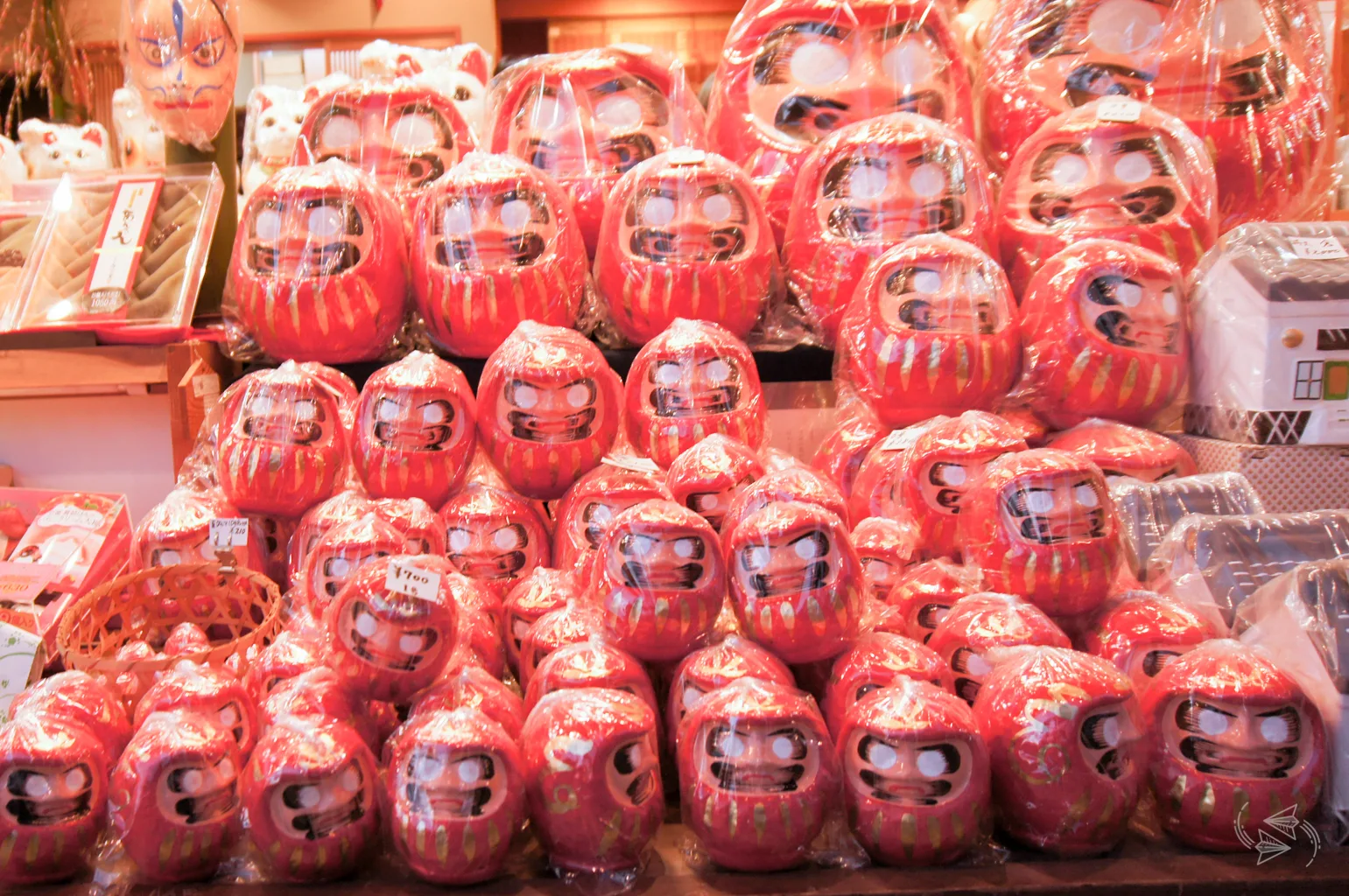
Usually made of papier-mâché, daruma are sold without pupils. The recipient of the doll fills in one pupil upon setting the goal, and then fills in the other when the goal has been achieved successfully. A one-eyed daruma is a reminder of the goal, and helps keep one on track to attaining it.
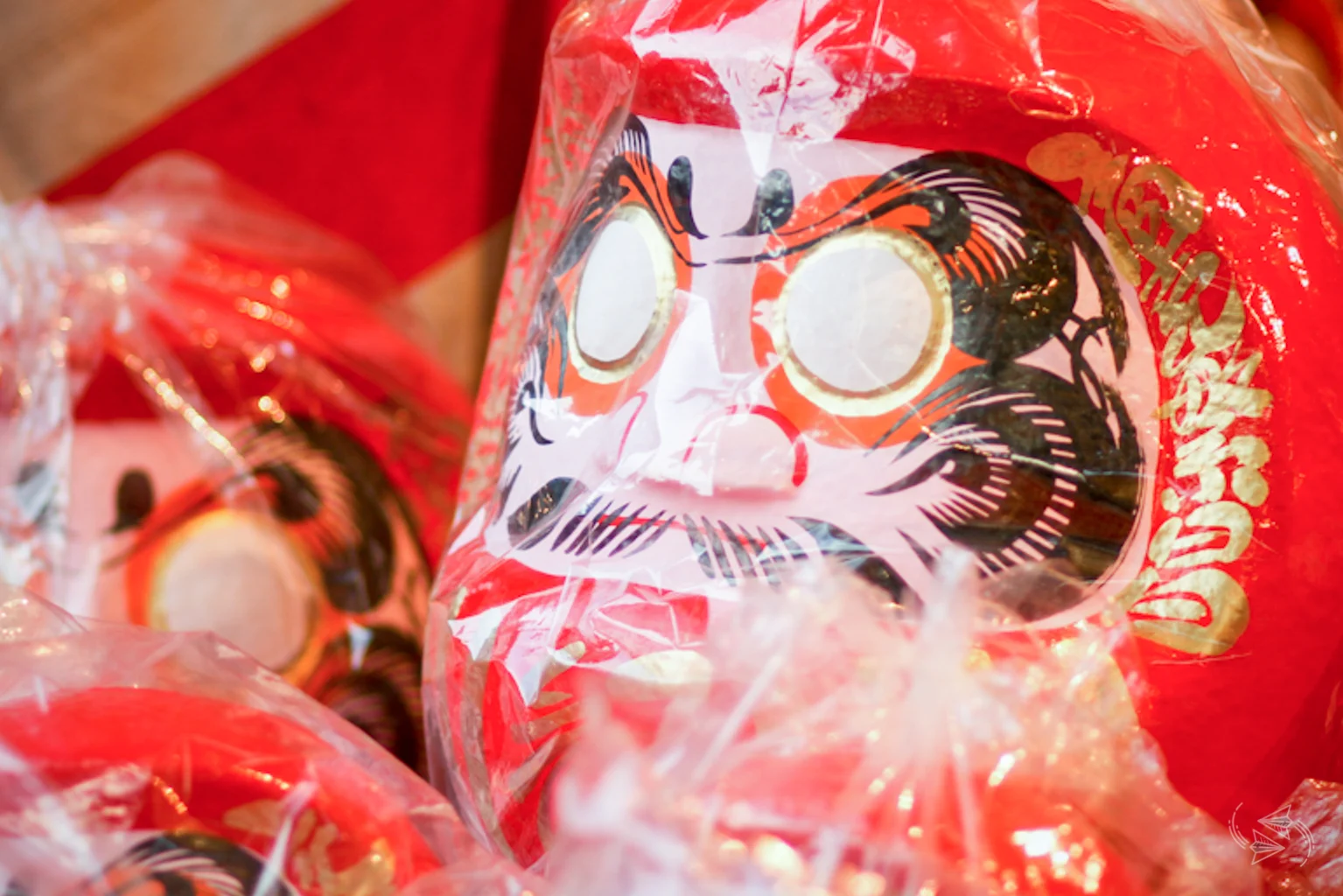
Used daruma are returned to temples in the New Year to express gratitude for the wish coming true. Like the other representations of good fortune, daruma are also burned in a ceremony known as Daruma Kuyo. The most-well known of these ceremonies are held at Nishi-Arai Daishi Temple (Tokyo) and Dairyuu-ji Temple in (Gifu) and include monks, conch shells and tens of thousands of daruma being set alight.
Japanese New Year Postcards – nengajo
It is customary to send New Year’s postcards known as nengajō (年賀状) to friends and relatives. They are a means of informing loved ones of how we are and what we have been up to, and to extend our tidings of the season, much like the Western custom of giving Christmas cards. These days, it is part of common business practice to send New Year’s greetings to clients and business contacts.
Department stores and shops sell a wide range of stationery for nengajō – the cards themselves as well as stamps and stickers to personalize them. Most cards and embellishments have some reference to the animal of the year based on the Chinese zodiac. There is often a lot of space left on purchased cards as an opportunity to showcase handwriting abilities. Some are sold blank entirely for personalized calligraphy messages. However, given that this takes a lot of time during a busy season, many Japanese nowadays print their own at home or at a printing shop and add only a very short personalized message.
Japanese people send these postcards so that they arrive on January 1st. The postal service even guarantees delivery of the postcards on this date if they are posted within a certain time period and are marked with the word nengajō.
It is customary not to send nengajō when there has been a death in the family. In this case, a family member will instead send an advanced “mourning postcard” or mochū hagaki (喪中葉書) to inform others not to send them New Year cards that year out of respect for the deceased.
Otoshidama & New Year Children’s Games
New Year is often a favorite time for Japanese children as on New Year’s Day they receive gifts of money known as otoshidama (お年玉). Similar to the “red envelopes” given to children in Chinese culture during lunar New Year, otoshidama is given in small decorated packets called “pochibukuro“.
New Year is also a time to play traditional games such as hanetsuki (a ball game similar to badminton using wooden paddles), takoage (kite flying), koma (spinning top), sugoroku (refers to two board games – one similar to backgammon and the other to snakes and ladders), fukuwarai (whereby a blindfolded person places paper parts of a face, such as eyes, eyebrows, a nose and a mouth, on a paper face) and karuta (a card game).
Fukubukuro – Japanese lucky shopping bags
New Year also marks the beginning of the winter sale season. Aside from general discounts, Japanese stores often sell fukubukuro or “lucky bags”, which are basically mystery bags of clothes, electronics, accessories (whatever the store sells) for a set price. Clothes-wise, you simply choose a bag for men or women and in your size.
While prices are usually significantly below retail, you have no idea of the contents before purchase. It therefore can be a bit hit and miss. That’s why many Japanese pool their money with friends and then each take something they like, or they trade their pieces with others. Click here for advice on how to get the best lucky bags in Japan.
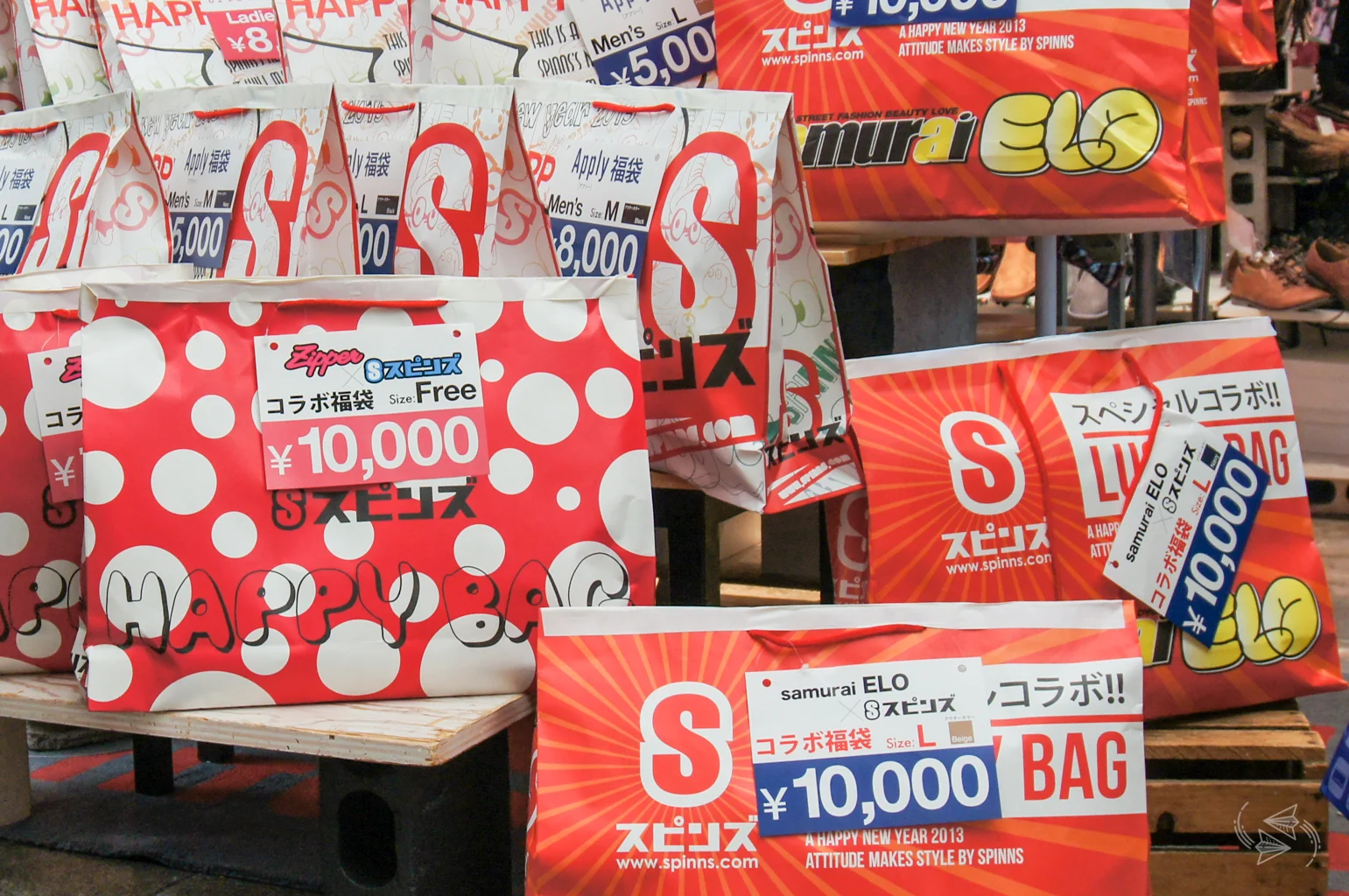
Shinnenkai – Japanese New Year parties
Shinnenkai are New Year’s parties. They usually start off as a family affair at home or at the homes of relatives from January 1st-3rd, however, they can extend all the way through January for get-togethers with friends, co-workers, classmates and other community groups. Shinnenkai outside of more family-oriented parties are basically drinking affairs, and like bōnenkai are usually held at Japanese-style drinking establishments known as izakaya.
